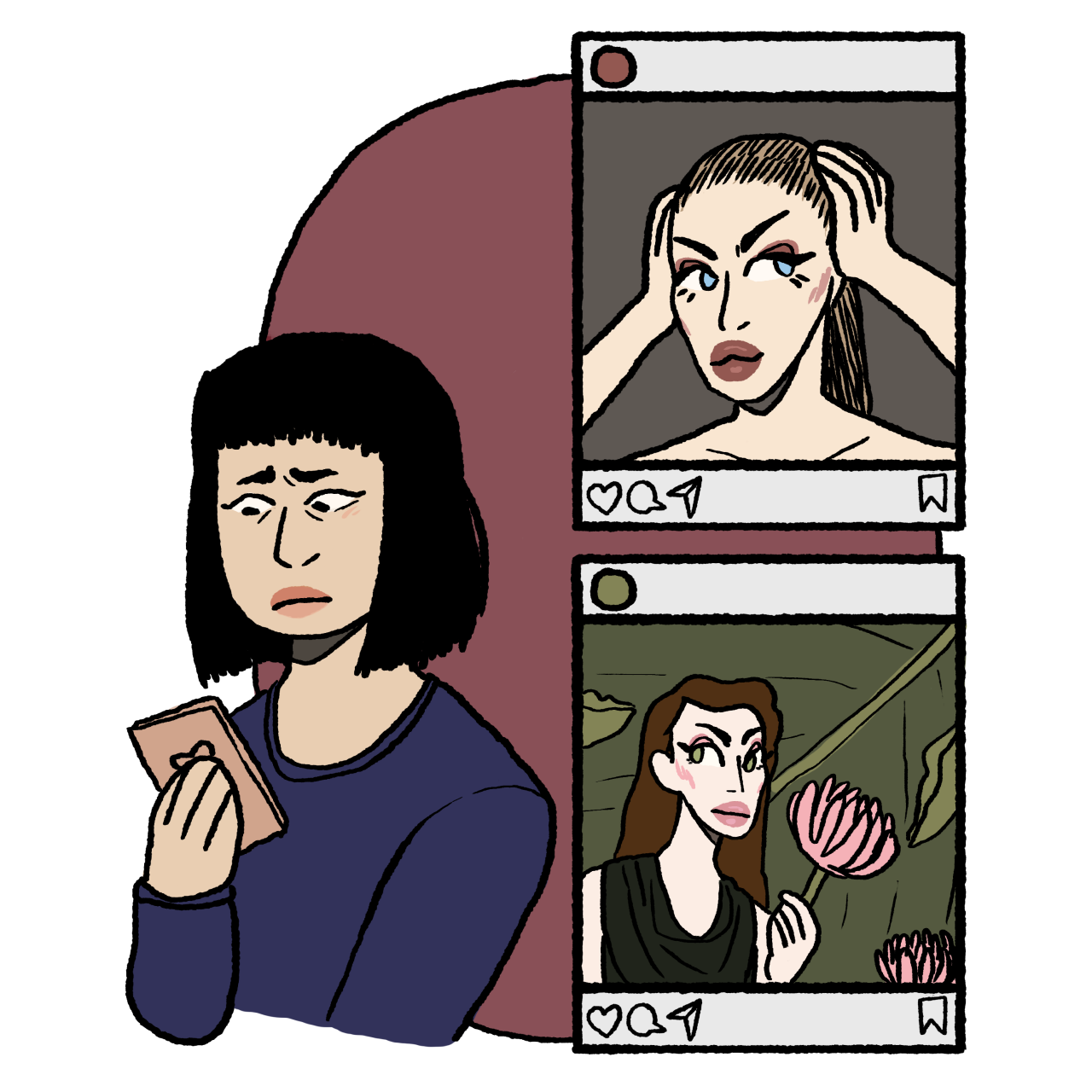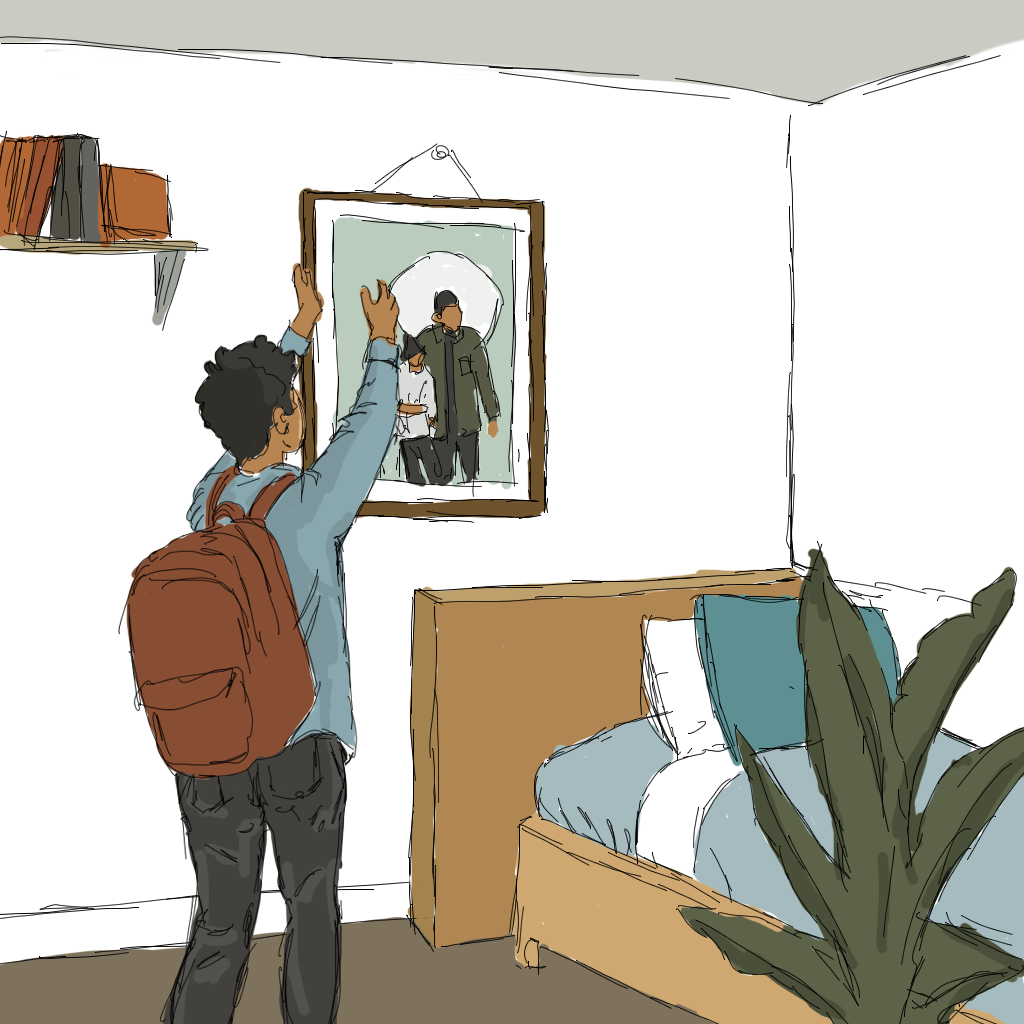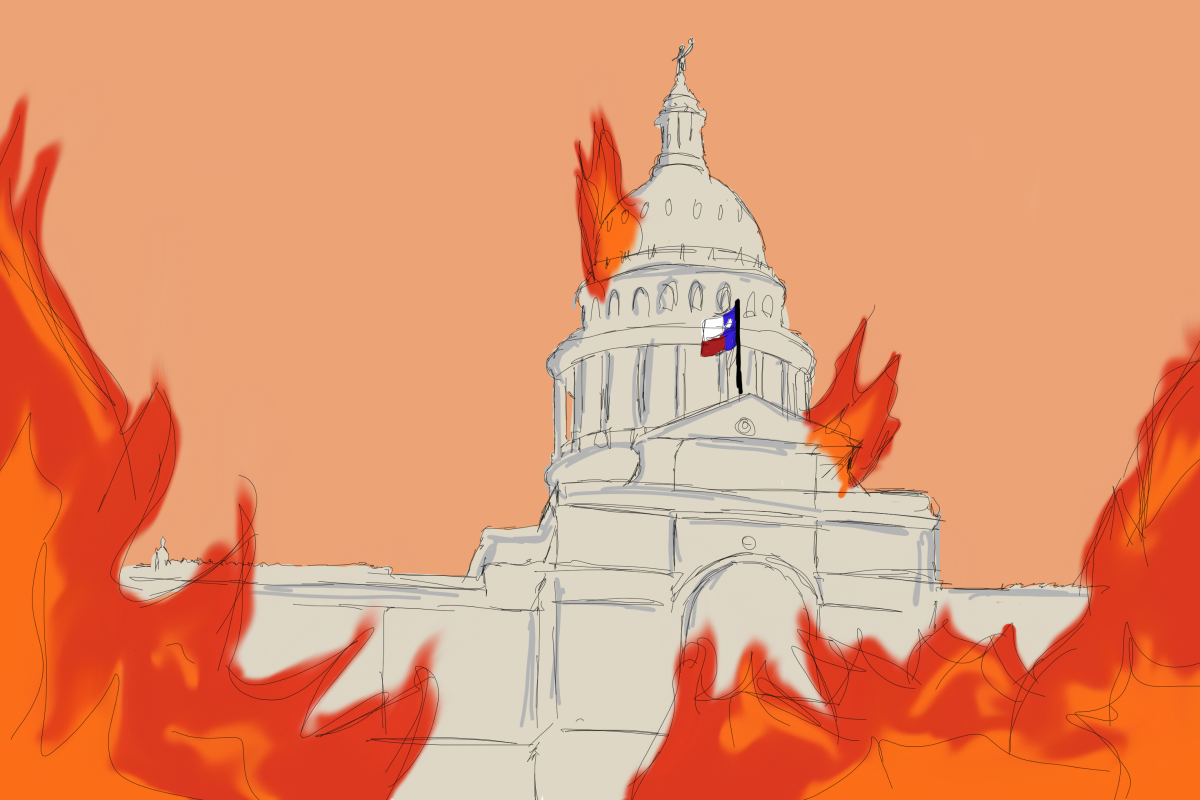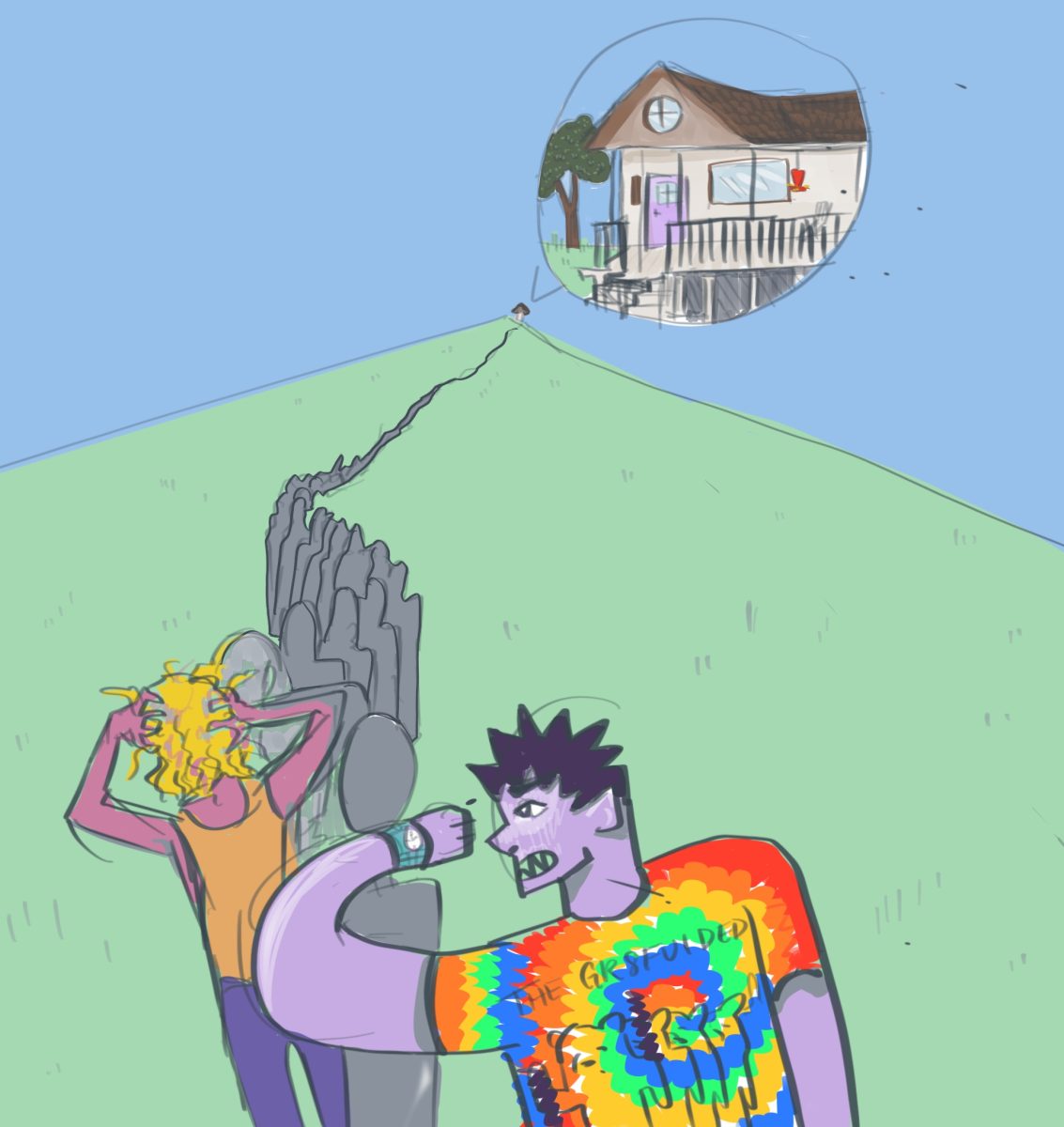Illustration by Ren Rader
In a new era of TikTok entertainment, the “Bella Hadid” or “fox eye” trend has become prominent, sparking debate about whether or not it is offensive towards East Asians. The makeup look, which elongates the eye shape in an exaggerated upward slant, is often paired with pulling the eyes towards the temples. While the makeup look is beautiful, this image is clearly evocative of the natural shape of East Asian eyes as well as the racist gesture used to mock us for having “chinky” eyes. What doesn’t sit right with many is the constant reminder that women with Eurocentric features still set the standards for beauty, fueled by the appropriation of cultural aesthetics and racial features to appear “exotic.” Bella Hadid, along with many other A-list celebrities, achieved her sleek lifted eyes through a brow lift. Meanwhile, many East Asian kids in America share the experience of being made fun of for being born with “slanty” small eyes or flat noses, distinct racial features that become the brunt of supposedly harmless jokes. These jokes become old quickly, and I used to dismiss them as things that I’m used to hearing. Racial jokes are not meant to be taken seriously, they say, but many of us went home and put on double eyelid tape, just to stare into rounder, more “beautiful” eyes in the mirror.
Ultimately, I believe that fox-eye makeup is non-offensive and isn’t intended to resemble Asian eyes’ shapes. However, the hand gesture strikes an odd chord for many of us when we are reminded of the racial aggressions we were met with as children and had to desensitize ourselves to growing up. Reading through the arguments that this trend provoked, I was quite unsure at first if this topic was even worth writing about or if I was allowed to feel triggered by the trend. However, it was clear that racism towards Asians is normalized and that many were also conflicted about how to feel. This trend, among many others, conveys to the world that we continue to fear, praise and capitalize on exotic looks. Celebrities and the mainstream beauty community are constantly capitalizing on exoticism through the wearing of non-Eurocentric features, reducing them to a trend.
The lines between inspiration, appropriation and mockery become clear when understanding who is held as a “standard” and who is considered the “other.” The Asian-American experience of being exoticized is a double standard of being both mocked and fetishized, but the effect is the same: we are the “other.” Although the beauty community is now gearing towards including a more diverse set of faces and bodies, learning how to do makeup was a nightmare for those growing up with Asian eye shapes. Recognizing physical beauty can be a painful or costly experience for those who fall outside of Eurocentric norms. My hope is for more people to practice learning cultural sensitivity by listening to the discomforts of others experiencing racial slights.






